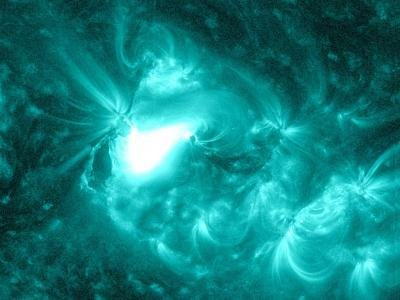GREENBELT, Md., June 15 (UPI) -- An active region on the sun that rotated into view of the Earth Sunday has fired off two flares and two coronal mass ejections, U.S. scientists say.
The first flare lasted for a relatively long 3 hours, peaking at 9:17 a.m. EDT Wednesday, the NASA/Goddard Space Flight Center reported.















